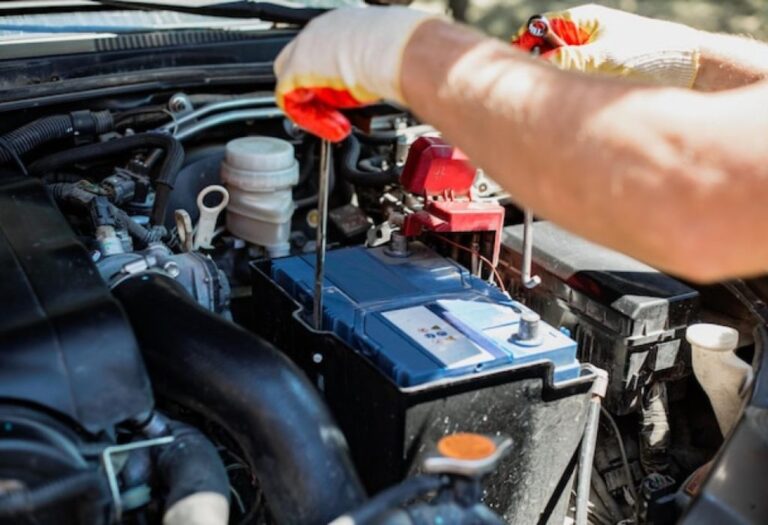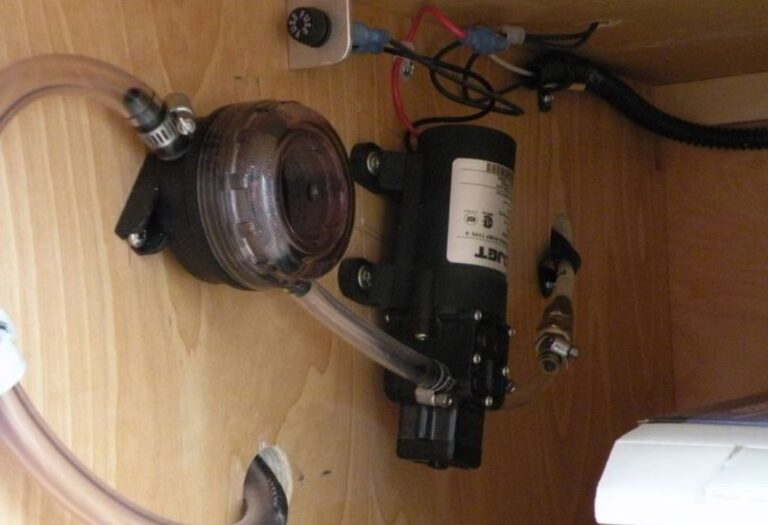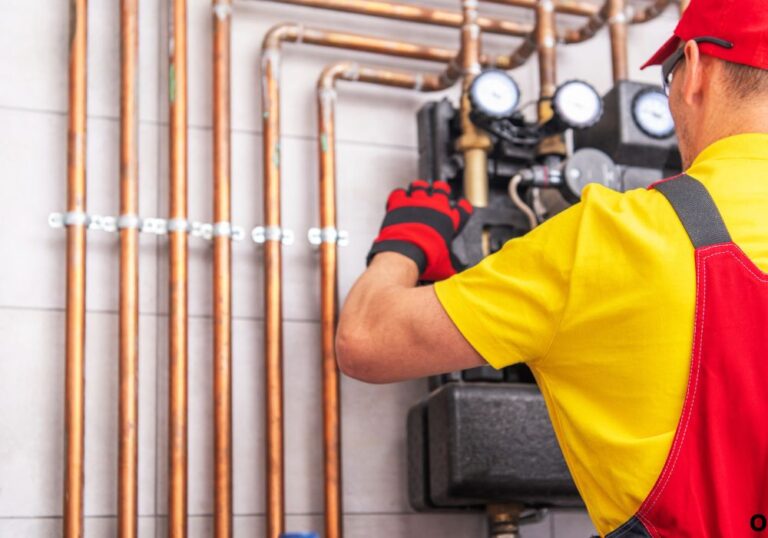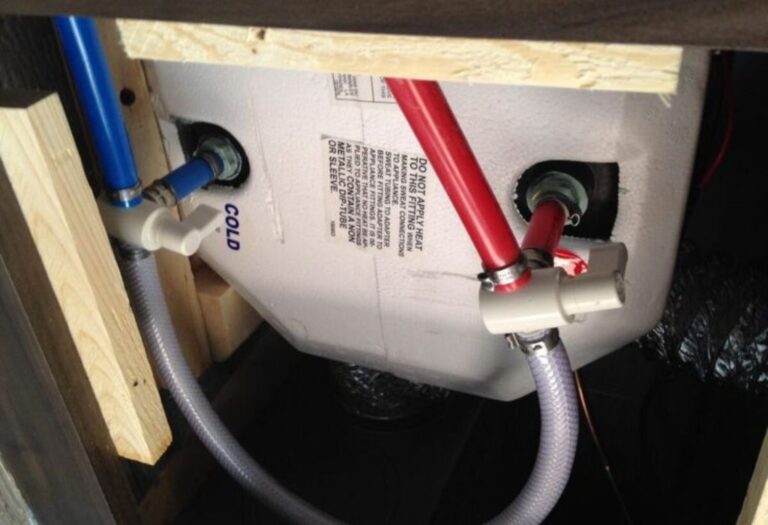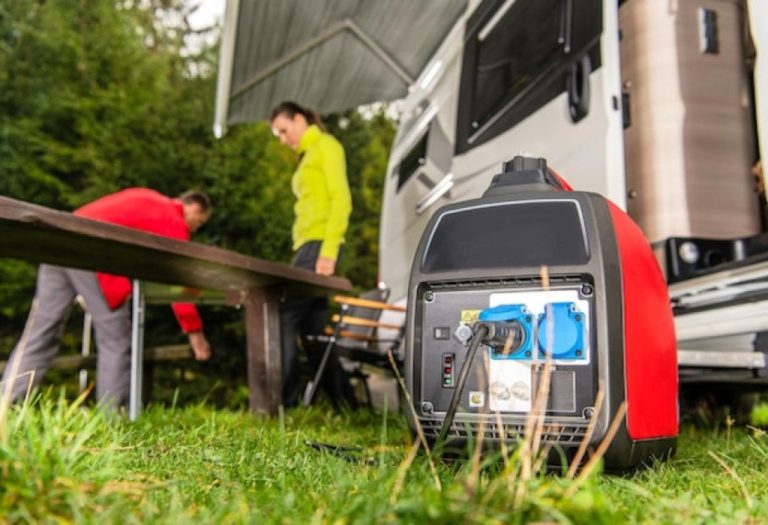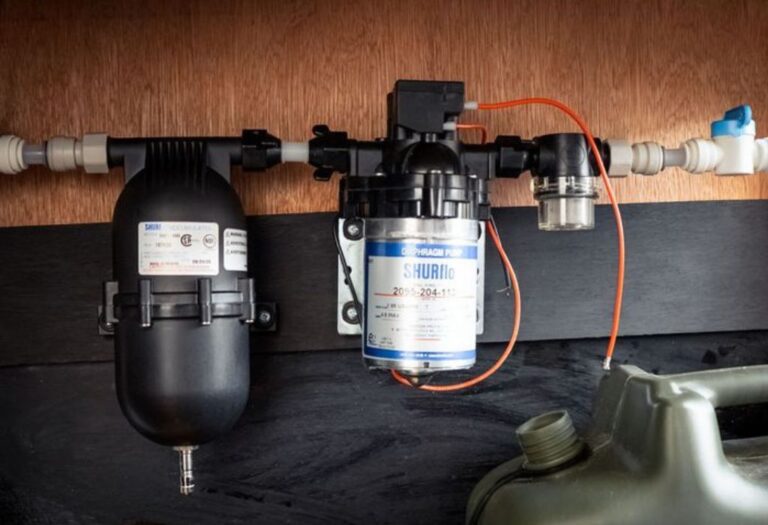How to Light an RV Water Heater Safely
The morning chill seeps through the RV walls as steam from your coffee curls in the air. You twist the faucet expecting warmth, but instead, a stream of cold water jolts you awake. The water heater that worked perfectly yesterday has suddenly gone silent — and now, comfort has turned into confusion.
This is one of the most common frustrations RV owners face during trips or after long storage periods. A small issue, like a pilot light going out or an electronic ignition failing, can instantly disrupt your plans. Many travelers are caught off guard because they aren’t sure how to light an RV water heater or what safety checks to perform before doing it.
According to the U.S. Fire Administration, nearly 4,200 RV fires occur annually, leading to about 15 deaths, 125 injuries, and over $60 million in property loss (source). While not all of these incidents stem from water heaters, they highlight the risks involved in working with propane systems without proper precautions. Another report from RVTravel.com notes that 7% of RV fires start during the afternoon when appliances like heaters and stoves are most active (source).
Learning how to properly light your RV water heater is more than a convenience — it’s a safety measure and a confidence booster. This guide breaks down the entire process step by step, showing how to handle both pilot-light and direct spark ignition (DSI) models safely, recognize early warning signs, and keep your water system running smoothly throughout every season.
Before You Start: Safety Checks That Prevent Damage
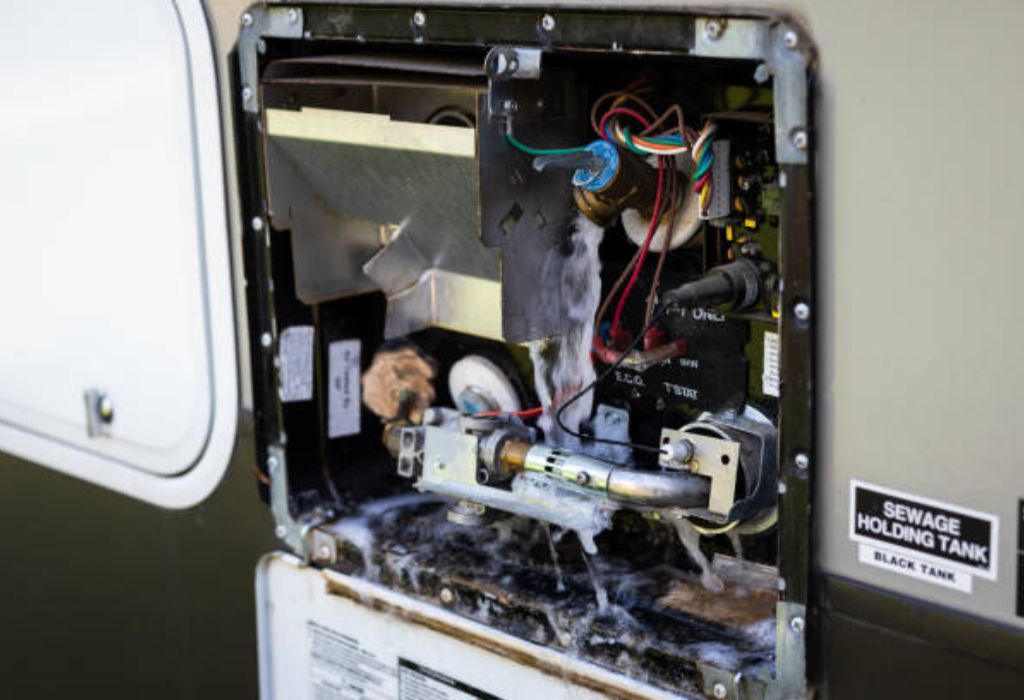
Before learning how to light an RV water heater, you need to make sure your setup is safe to operate. Small oversights, such as forgetting to fill the tank or skipping a leak test, can lead to major problems.
Always confirm that the water heater tank is full before lighting. Firing up the heater without water can destroy the heating element almost instantly.
Make sure your propane supply is open and the lines are purged of air. Turn on a stove burner for a few seconds to release any trapped air from the system.
Ventilation is crucial before ignition. Open nearby windows or access panels so no gas buildup remains inside the heater compartment.
According to the U.S. Fire Administration, propane-related malfunctions are a leading cause of RV fires each year, highlighting the importance of careful preparation (source).
How do you know if your tank is full?
Lift the pressure-relief valve slightly — if water sprays out, the tank is full and ready.
Should you ventilate before lighting?
Yes. A few minutes of airflow removes lingering gas and keeps ignition safe.
What if you smell propane?
Shut off the gas immediately, avoid any flames, and call a certified RV technician.
Do you need a fire extinguisher?
Always keep an RV-rated extinguisher nearby when working around propane.
Can you light while connected to shore power?
Yes, but turn off the electric switch to avoid confusion or double heating.
Identify Your Water Heater Type (Pilot, DSI, or Combo)
Before you can light your heater, you must know which type your RV has. The process varies depending on whether it’s a manual pilot-light system or a Direct Spark Ignition (DSI) model.
Most older RVs use pilot-light systems that must be lit manually from the exterior compartment. Modern RVs use electronic DSI models, which ignite automatically when you flip a switch inside.
Suburban and Atwood/Dometic are the most common manufacturers. Suburban models usually have steel tanks with an anode rod, while Atwood units feature aluminum tanks without anodes.
What is a DSI water heater?
It uses an electric spark and circuit board to ignite gas automatically.
Do Suburban and Atwood differ?
Yes. Suburban uses porcelain-lined steel tanks; Atwood uses lighter aluminum tanks.
Where is your model ID?
Check behind the exterior heater door or on the label near the control panel.
Can you tell by looking at the switch?
If your RV has a “GAS” switch inside, it’s a DSI model; no switch usually means a pilot system.
Quick Tools and Preparation Checklist
Having the right tools makes the process smoother and safer. Gather a long-neck lighter, flashlight, paper towel, and soapy water spray bottle to check for leaks.
Make sure you have access to both the interior switch panel and the exterior water-heater door. If you’re using a DSI model, confirm the 12V system is active since it powers the ignition board.
Do you need 12V power for DSI models?
Yes. Without battery voltage, the spark won’t ignite.
What’s the purpose of a soapy water test?
Bubbles indicate leaks in propane fittings.
Should you purge propane lines?
Yes. Running a stove burner for 30 seconds clears air pockets.
Is it safe to work in tight areas?
Ensure proper ventilation and avoid sparks or static discharge.
How to Light a Pilot-Light RV Water Heater
Manual pilot-light models require you to ignite the flame at the heater itself. Open the exterior access door to reach the gas control knob and pilot assembly.
Turn the knob to OFF and wait a few minutes to clear any gas. Then turn it to PILOT and press the pilot button while holding a lighter to the burner tip. Continue holding for 30–60 seconds after the flame appears before switching the knob to ON.
The flame should burn blue and steady. A yellow or flickering flame means improper air or a dirty burner tube.
Why won’t the pilot stay lit?
The thermocouple might be dirty or failing; clean or replace it.
How long should you hold the pilot button?
Typically 30 seconds, or until the flame remains stable.
What does a yellow flame indicate?
Too little air or debris in the burner tube — clean it.
Can wind blow out the pilot?
Yes. Close the exterior panel gently after lighting to shield it.
What pressure should propane run at?
Around 11″ water column, verified by a professional.
How to Light a DSI (Direct Spark Ignition) RV Water Heater
If your RV uses DSI ignition, lighting is much simpler. Ensure water and propane are ready, then flip the GAS switch inside your RV to the “ON” position.
You should hear a clicking sound as the igniter sparks. The burner should ignite within 10–15 seconds. If not, the DSI Fault Light (DSI FLT) will illuminate, indicating ignition failure.
If this happens, turn the switch off, wait a minute, and retry. Persistent failure may indicate air in the line, a weak spark, or a blocked burner orifice.
What does “DSI FLT” mean?
The system tried to ignite but didn’t detect a flame.
Can low battery voltage stop ignition?
Yes. The spark and valve need full 12V power.
Where is the electric switch?
Often hidden behind the exterior access door near the bottom left.
Should you reset after each failed attempt?
Yes. Turn it off for a minute to clear gas before trying again.
Can dirty electrodes cause issues?
Yes. Wipe the spark probe gently with fine sandpaper or alcohol.
First Start After Storage or Propane Refill
If your RV has been in storage or just had propane refilled, air may be trapped in the gas lines. This causes clicking without ignition.
Open a stove burner for 30 seconds to purge the air before trying to light the water heater. Also, ensure the bypass valves are set correctly so water fills the heater tank.
Always confirm water flow from the relief valve before turning on gas or electric heat. Running the heater dry can destroy the heating element instantly.
Why does the igniter click but not light?
Air in the lines — purge through the stove.
How do you confirm the bypass is set correctly?
Valves should be turned so water flows into the tank.
Can you use electric mode first?
Only if the tank is full of water.
Why does it take longer after winterizing?
Extra air must purge from both water and propane systems.
Troubleshooting When It Won’t Light
If your RV water heater won’t light after several tries, it’s time to troubleshoot. Start with the basics: propane level, battery voltage, and burner cleanliness.
Check if the ECO (Energy Cut-Off) switch has tripped due to overheating. Inspect the thermostat and thermocouple for corrosion or loose connections.
Sediment buildup in the tank can also interfere with heating efficiency. Flushing the tank each season helps prevent scale problems.
Pilot stays lit but no burner flame?
The gas valve or thermostat could be faulty.
What is the ECO switch?
A safety cutoff that stops gas flow if the water overheats.
Can sediment affect ignition?
Yes. Sediment can block the burner or reduce efficiency.
When should you call a professional?
If issues persist after basic checks or you suspect an electrical fault.
Routine Maintenance That Makes Lighting Easy
Regular maintenance keeps your heater reliable year-round. Drain and flush the tank every few months to remove sediment and mineral buildup.
Inspect the burner assembly, igniter probe, and gas lines for dust, rust, or debris. Clean with compressed air or a soft brush.
If your unit has an anode rod (Suburban models), check it yearly and replace it when more than 75% corroded.
Do all RV water heaters need anodes?
Only Suburban models — Atwood/Dometic tanks don’t use them.
How often should you flush the tank?
Every 3–6 months, depending on water hardness.
What’s the ideal burner flame color?
A sharp blue flame with little yellowing.
Can you clean the burner yourself?
Yes, but turn off propane and disconnect power first.
Safety Essentials While Lighting and Operating
Safety is the foundation of proper RV water heater maintenance. Always test propane and smoke detectors monthly. Replace batteries regularly to ensure early warnings work.
Avoid lighting the heater near open flames, grills, or fuel containers. Keep the area clean and dry to prevent combustion risks.
According to NFPA, most fatal RV fires occur in vehicles without working smoke alarms, making maintenance critical (source).
Where should alarms be installed?
Place propane and CO alarms near the floor and smoke alarms near the ceiling.
How often to replace them?
Every 5–7 years or as directed by the manufacturer.
Should you test before every trip?
Yes. A few seconds of testing can prevent major accidents.
Is it safe to light near other appliances?
No. Always isolate ignition sources and open ventilation.
When to Use Electric Mode vs Gas Mode

Most modern RV water heaters can run on both propane gas and 120V electric power. Knowing when to use each can save energy and extend system life.
Use electric mode when connected to shore power for consistent heating without draining propane. Use gas mode when boondocking or needing faster recovery times.
Some models allow both to run simultaneously for quicker heating, but always follow your manufacturer’s recommendations.
Can you use both gas and electric at once?
Yes, many models support hybrid operation.
Where is the electric switch located?
Typically behind the exterior panel or near the bottom of the tank.
Will electric heating work while driving?
No, unless connected to a generator or inverter.
Does gas heat faster?
Yes. Propane usually provides faster water recovery rates.
Step-By-Step Recap: Pilot vs DSI
Let’s summarize the lighting steps for both systems in one place for easy reference.
Pilot-Light Model:
- Turn gas knob to OFF → wait 5 minutes.
- Turn to PILOT → press and hold pilot button → ignite.
- Hold for 30–60 seconds → release → turn to ON.
DSI Model:
- Verify tank is full and propane supply open.
- Flip GAS switch to “ON.”
- Wait for ignition or reset if the DSI Fault Light appears.
Why repeat the process?
It reinforces safety habits and helps new RVers memorize key steps.
How to prevent future issues?
Regular maintenance, clean burners, and full propane tanks.
Is manual lighting still common?
Yes, especially in older RVs and trailers.
What’s most important before ignition?
Confirm water in the tank and leak-free propane lines.
Conclusion
Lighting an RV water heater doesn’t need to be stressful or risky. Whether you’re using a pilot-light model or a DSI system, following these steps ensures both safety and reliability.
Always remember: check for water, ventilate, and inspect your propane system before lighting. With regular maintenance, your heater will provide years of dependable performance.
Before your next adventure, test your system, confirm your alarms work, and keep a fire extinguisher nearby. The few minutes you spend preparing could save your trip — and your RV.
I’m David R. Coleman, the founder, lead writer, and lifelong tool enthusiast behind GarageToolPro.com. With years of experience in automotive repair, woodworking, and home DIY projects, I created this platform to share practical tips, detailed tool reviews, and step-by-step guides that help mechanics, hobbyists, and homeowners get the job done right the first time.

